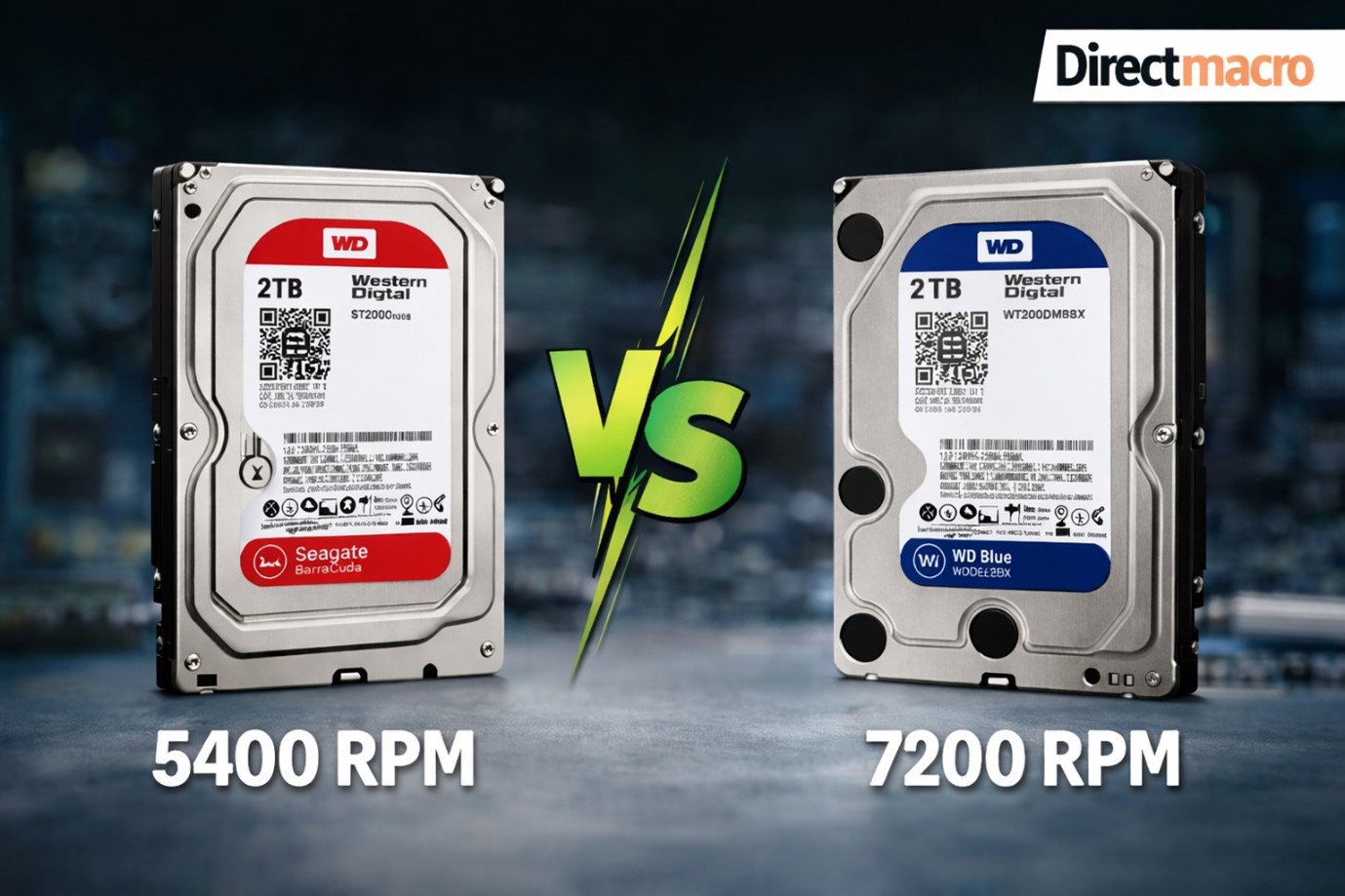How to Check the CPU Temperature: Mastering CPU Care for Optimal Performance
Like taking your car’s temperature, monitoring your CPU’s temperature is vital for its health. It’s essential to know how to see CPU temp because it gives you insight into your PC’s performance. When your CPU overheats, as a result, it might throttle its speed to cool down, ultimately causing your system to slow down. Monitoring can prevent this and ensure optimal performance.
What is CPU Temperature?
The CPU temperature refers to the heat level of your computer’s central processing unit. This heat is generated because electrical energy is converted into thermal energy while your CPU processes data.
Why is Monitoring CPU Temperature Important?
Your CPU serves as the brain of your computer, responsible for executing all the complex tasks that allow your system to function smoothly. As your CPU operates, it generates heat as a byproduct. If this heat is not effectively dissipated, the CPU can reach high temperatures, leading to potential performance issues and even hardware damage.
When a CPU overheats, consequently, it may activate a built-in mechanism known as thermal throttling. This mechanism slows down the CPU’s clock speed to reduce heat generation and prevent damage. However, thermal throttling can significantly impact your system’s performance, causing it to slow down and become less responsive.
Potential Risks of Overheating
An overheated CPU can cause everything from minor inconveniences to major system failures. At first, you might notice your system slowing down, then hanging, or eventually restarting unexpectedly. If the issue persists, the CPU can sustain permanent damage, leading to a complete system failure or significant data loss. Therefore, knowing how to check CPU temp becomes a necessity, rather than a luxury.
Factors Affecting CPU Temperature
Several factors can affect your CPU’s temperature, including the ambient room temperature, the CPU’s workload, the quality of your cooling solution, and even the cleanliness of your system. Dust can act as an insulator, leading to increased heat.
Methods to Check CPU Temperature
Maintaining your CPU’s temperature within a safe range is vital for your computer’s optimal performance and longevity. There are several methods to check CPU temp, each with its unique benefits and uses. In this section, we’ll explore software-based methods, BIOS-based methods, and hardware-based methods for temperature monitoring.
Software-Based Methods
Software-based methods are some of the most popular and user-friendly options for monitoring CPU temperature. They allow you to access temperature readings in real time while running your usual tasks, providing you with ongoing insights into your CPU’s health.
Popular Temperature Monitoring Software
There are numerous software solutions that allow you to monitor your CPU temperature, with some of the most popular options being HWMonitor, Speccy, and Core Temp. Each of these offers a straightforward and effective way to track temperature, often alongside other useful system information.
- HWMonitor is a hardware monitoring tool that reads systems’ main health sensors, including CPU temperature, voltages, fan speed, and more. It’s a comprehensive tool that provides insights into your entire system’s performance.
- Speccy is a fast, lightweight system information tool that, among other things, can measure CPU temperature. It’s a great option for those who need a quick and simple temperature check without the need for detailed system information.
- Core Temp is a compact, no-fuss software that allows you to monitor CPU temperature.
Step-By-Step Guide to Using Software
Using temperature checker software is typically a straightforward process. As an example, here’s how you can use Core Temp to monitor your CPU’s temperature:
- Download Core Temp from its official website. Ensure you’re downloading from a trusted source to avoid unwanted software or potential malware.
- Install the software by following the installation wizard’s instructions once it has been downloaded.
- After installation, run Core Temp. The software will immediately start monitoring your CPU’s temperature, displaying the information clearly on the main interface. You’ll be able to see the temperature of each core of your CPU in real-time, permitting you to monitor any changes as they occur.
BIOS-Based Methods
While software-based methods are effective for real-time monitoring, you can also check your CPU’s temperature through your system’s BIOS (Basic Input/Output System). This is a more direct method, although it doesn’t allow for ongoing monitoring while performing other tasks on your PC.
Accessing BIOS Settings
To access the BIOS and check your CPU’s temperature, follow these steps:
- Restart your computer.
- As your computer starts up, press the appropriate key to enter the BIOS.
- Once you’re in the BIOS, navigate using the arrow keys on your keyboard. Be cautious not to change any settings unless you’re sure of their function, as this could have significant impacts on your system’s performance.
Locating Temperature Readings
To find your CPU’s temperature reading in the BIOS:
- Navigate to a menu labeled something like “PC Health Status” or “Hardware Monitor”. The exact name will depend on your motherboard’s manufacturer and the version of BIOS you’re using.
- Within this menu, you should find a reading for your CPU temperature. Note that this is a static reading, and it will not change while you’re observing it.
Hardware-Based Methods
If you’re seeking a more hands-on, technical approach to monitoring your CPU’s temperature, hardware-based methods are an excellent choice. These involve using physical devices that read the CPU’s temperature directly, providing accurate and real-time measurements.
Introduction to Temperature Monitoring Devices
Temperature monitoring devices, often called hardware monitors, are physical devices that use a probe or sensor to read your CPU’s temperature. These sensors are placed on or near the CPU, allowing for a direct temperature reading. In comparison, hardware monitors can provide more precise measurements than software or BIOS methods, and as a result, they are often preferred by tech enthusiasts and professionals for their accuracy and reliability.
How to Install and Use a Hardware Monitor
The process of installing and using a hardware monitor varies depending on the specific model, but here are some general steps:
- Purchase a hardware monitor that’s compatible with your computer. Some popular brands include NZXT, Corsair, and Cooler Master. These devices usually come with one or more temperature probes and a display unit.
- Place the temperature probe on the CPU’s surface. This should be done carefully to avoid any damage. Some hardware monitors use adhesive or clips to secure the probe.
- Connect the hardware monitor to your system’s motherboard.
- Once installed, the readings from the monitor are typically displayed on an LCD panel that can be placed inside or outside your PC’s case. This allows you to easily check your CPU’s temperature at any time.
There are various methods to monitor your CPU temperature, each with its unique advantages. Whether you choose a software-based, BIOS-based, or hardware-based method depends on your personal needs and technical comfort level. Regardless of the method you choose, regularly monitoring your CPU temperature is crucial for maintaining your computer’s performance and longevity.
Interpreting CPU Temperature Readings
Knowing how to check your CPU temperature is only half of the equation. The other half lies in interpreting the readings and understanding what they mean for your computer’s health and performance. In this section, we’ll discuss normal temperature ranges for CPUs, how to identify signs of overheating, and troubleshooting steps for high temperature issues.
Normal Temperature Ranges for CPUs
When asking “What’s a good temp for a CPU?” it’s important to note that the answer can vary depending on your CPU’s make and model. Generally speaking, a safe temperature range for most CPUs under load is between 40 and 70 degrees Celsius. However, the ideal temperature can differ based on your specific processor and manufacturer’s guidelines.
An idle CPU—that is, a CPU that isn’t executing any user applications—should generally sit at a temperature between 30 and 40 degrees Celsius. A CPU under heavy load, such as when playing a resource-intensive game or running a demanding application, might heat up to between 60 and 85 degrees Celsius.
However, these are broad guidelines and the specifics can depend on your CPU’s make and model, its cooling solution, and the ambient temperature around your PC. Always consult your CPU’s manufacturer’s specifications for the most accurate information.
Identifying Signs of Overheating
Recognizing the signs of an overheating CPU is crucial to prevent long-term damage to your computer. Some common symptoms of an overheating CPU include:
- System instability: If your computer is frequently crashing, freezing, or rebooting, it might be due to the CPU overheating.
- High fan speeds: Fans in your computer will often speed up in an attempt to cool down an overheating CPU. If you notice your fans are running at high speeds more frequently than usual, it could indicate an overheating issue.
- Performance issues: Overheating can cause your computer’s performance to degrade, leading to slow response times, lag, and decreased functionality.
If you’re noticing these signs, it’s crucial to check your CPU temperature and take steps to cool it down if necessary.
Troubleshooting High-Temperature Issues
If you suspect that your CPU is running hot, there are several steps you can take to address the issue:
- Ensure good airflow: Make sure there’s enough space around your PC for air to circulate freely. If your PC’s vents are blocked or if it’s placed in a cramped or poorly ventilated space, it can cause the CPU to heat up.
- Clean your PC: Dust and dirt can accumulate in your PC over time, blocking vents and impeding fans, which can lead to overheating. Regularly cleaning your PC, particularly the fans and heatsinks, is essential to help maintain optimal cooling.
- Upgrade your cooling solution: If you’re running resource-intensive applications or if your current cooling solution isn’t sufficient, you might need to upgrade to a more effective cooler. Options include larger or more efficient air coolers or even liquid cooling systems for advanced cooling needs.
Best Practices for Maintaining Optimal CPU Temperature
Maintaining an optimal CPU temperature isn’t just about monitoring the heat and addressing issues as they arise. It’s also about preventive care and implementing best practices to ensure your CPU stays cool and performs efficiently over time. Let’s explore the key strategies that can help maintain an optimal CPU temperature: maintaining good airflow, cleaning your CPU and cooling components regularly, and choosing the right cooling solution.
Keeping the CPU Cool with Proper Airflow
Proper airflow is a critical component of an effective cooling system. It ensures that cool air is continually supplied to your CPU and that the hot air is efficiently exhausted from your PC’s case. Here are some tips for maintaining good airflow:
- Position your fans correctly: Your PC’s case should have at least one intake fan (bringing cool air in) and one exhaust fan (pushing hot air out). For the best airflow, the intake fans should be positioned on the front or bottom of the case, and the exhaust fans should be on the rear or top.
- Avoid obstructions: Make sure the areas around your PC’s air vents are clear of obstructions. Items like papers, books, or even walls and furniture can block the vents and restrict airflow.
- Manage your cables: Poor cable management inside your PC can obstruct airflow, leading to higher temperatures. Try to keep your cables tidy and route them along the edges of the case or behind the motherboard tray if possible.
Cleaning the CPU and Cooling Components
Just as dust can clog up your home’s air vents, it can also accumulate inside your PC and hinder your system’s cooling efficiency. Regularly cleaning your CPU, fans, and other cooling components is an important maintenance task that can help keep your CPU temperature in check.
To clean your CPU and cooling components, you’ll need some canned air, a small brush, and some patience. Always be gentle when cleaning these components to avoid causing any damage. If you’re unsure about how to do this properly, there are many online guides and videos that can help, or consider seeking assistance from a professional.
Choosing the Right Cooling Solution
Different CPUs have different cooling needs, and the best solution for you will depend on your CPU’s heat output, your budget, and your comfort level with installation and maintenance. Here’s a brief overview of the major types of cooling solutions:
- Air cooling: This is the most common type of cooling, and it’s what most PCs come with. It uses fans and heatsinks to dissipate heat. Air coolers are typically affordable and easy to install; however, they might not be sufficient for high-end, overclocked CPUs.
- Liquid cooling: This type of cooling uses water or another liquid to transfer heat away from the CPU. Moreover, liquid coolers can be more efficient than air coolers, making them ideal for providing better cooling for high-performance CPUs. However, they’re typically more expensive and can be more complex to install.
- Phase-change cooling: This is an exotic type of cooling that works like a refrigerator, changing a liquid into a gas to absorb heat. While it can provide exceptional cooling, it’s costly, complex to install, and generally only used by enthusiasts and professionals.
Key Takeaways and Final Tips
Monitoring your CPU temperature is a vital part of maintaining your computer’s health. Remember, a cooler CPU is a happier CPU. Keep your system clean, ensure adequate airflow, and choose the right cooling solution for your needs. With the knowledge of how to check and manage your CPU temperature, you’re now well-prepared to keep your computer running smoothly and efficiently.
Your CPU is the heart of your computer. Like a careful cardiologist, monitor its temperature and ensure it’s always in a safe range. By doing so, you’re not just maintaining your computer, you’re investing in its longevity and optimal performance. So, the next time you fire up your PC for that resource-intensive game or software, remember the key insights from this guide. Happy computing!
FAQs
How to Check Temperature on PC?
There are several ways to check the temperature of your PC, but the most common method is by using software tools like HWMonitor, Core Temp, or Speccy. Once installed, these tools will display your PC’s temperature, including the CPU and other components.
How to Check the Temperature of the CPU?
The temperature of the CPU can be inspected using software-based methods, BIOS-based methods, or hardware-based methods. Software-based methods involve using programs like Core Temp, HWMonitor, or Speccy. BIOS-based methods involve restarting your PC and accessing your system’s BIOS settings. Hardware-based methods involve using a physical device that reads the CPU’s temperature using a probe or sensor.
What Temperature Should My CPU Be?
The ideal CPU temperature can vary depending on the specific model and manufacturer, but generally, a temperature of 40-70 degrees Celsius under load is considered safe. An idle CPU should sit at a temperature between 30 and 40 degrees Celsius.
What Is the Normal Temperature of a CPU?
A normal temperature range for most CPUs under load is between 40 and 70 degrees Celsius. An idle CPU—that isn’t executing any user applications—should generally sit at a temperature between 30 and 40 degrees Celsius. However, these values can depend on your CPU’s make and model, its cooling solution, and the ambient temperature around your PC. Always consult your CPU’s manufacturer’s specifications for the most accurate information.
Do you need advice on buying or selling hardware? Fill out the form and we will return.

Sales & Support
(855) 483-7810
We respond within 48 hours on all weekdays
Opening hours
Monday to thursday: 08.30-16.30
Friday: 08.30-15.30








